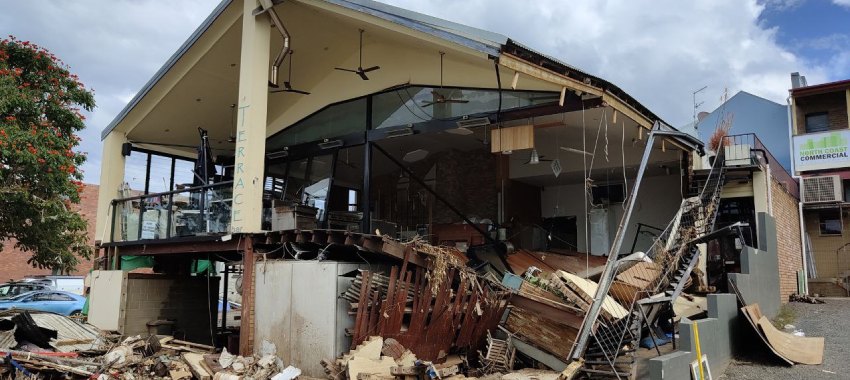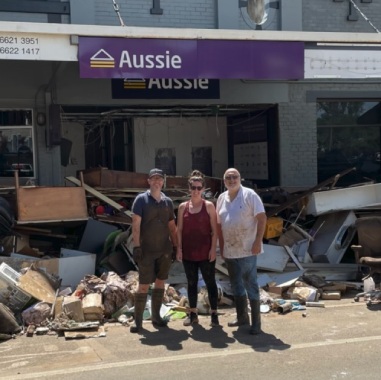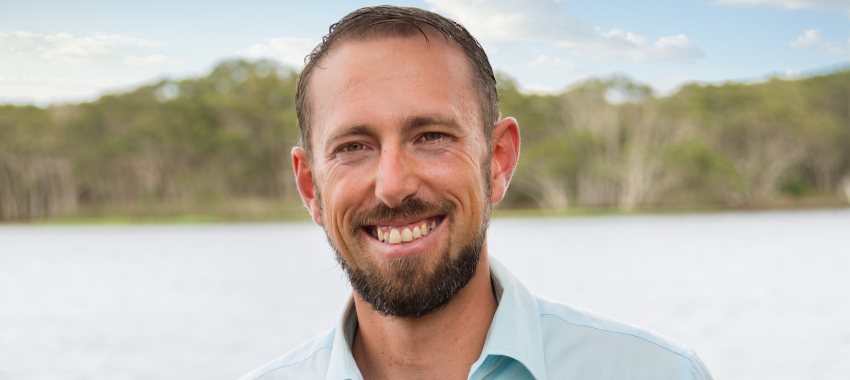
How will communities in northern NSW bounce back after two major floods in just four weeks?
The heavy rainfall, across northern NSW on Tuesday (29 March) and into Wednesday (30 March), sparked evacuation orders in low-lying areas across the North to Mid North Coast, with flash flooding in Lismore, Ballina, Byron Bay, Bellingen and many more towns.
The intense rainfall amid an already soaked landscape, following February and early March’s floods, and saw the flood levee at Wilson River in Lismore almost reach 12 metres (11.4), a near-record level alongside the 14-metre mark set a few weeks earlier, according to the Bureau of Meteorology.
This content is available exclusively to
The Adviser premium members.
To put that into perspective, the last time the Lismore levee hit similar heights was five years ago (2017), when it reached 11.59 metres. Twenty-eight years before that, in 1989, it reached 11.28 metres, in 1974 it topped 12.11 metres, which does not account for the several floods in between that were below 11 metres.
While the town of Lismore is prone to flooding, three major floods in a five-year period will be a steep hurdle to overcome, with many only just coming to terms with the February clean-up.
Chief executive of distribution Brad Cramb posted a tribute on his LinkedIn social media account acknowledging the “incredible hardship” being faced by these areas, including Aussie brokers.
“Our hearts at Lendi Group go out to everybody impacted, particularly Sana and the team at Aussie Northern Rivers in Lismore whose store has sustained significant flood-damage for the second time since 2017,” Mr Cramb said.
“Unfortunately, insurance cover is not offered for floods in their region, leaving the cost of rebuilding solely on small business owners.”
Mr Cramb directed people to a GoFundMe campaign, pledging the Lendi Group would match “every donation dollar-for-dollar” up to $25,000.

‘I’m never going back to my house again’
Lennox Head broker Zain Peart at ZEP Finance said he was fielding calls following the February floods with some wanting to pack up and leave their homes.
“I had one client call up and was pretty much crying, just saying ‘I’m never going back to my house again,’” Mr Peart said.
“She’s hoping that she’ll get the insurance payout and maybe enough to clear the loan and to just leave it and won’t go back.
“It’s pretty horrible.”
Mr Peart said people are searching for finance options to rebuild, move, or get back in.
“It’s different for every person,” Mr Peart said.
Building delays
While the pandemic has already stretched the building industry with cost of materials and delays, Mr Peart said the two main truss manufacturers were destroyed in February, adding immense pressure on an already volatile industry.
He said the region was faced with a shortage of materials and builders, and many are now wanting to leave the industry.
“A lot of them don’t want to be in the industry anymore because it’s too risky,” Mr Peart said.
“We’ve already had three or four local builders go broke.
“[Builders] have been dealing with these price increases for the last 12 to 18 months and they’ve got no money. They’re all running by the skin on the teeth.”
Defaults inevitable
With the enormity of building work and tradespeople that are needed post-floods and the growing uncertainty of building and insurance delays, Mr Peart fears many borrowers will be pushed to default on their loans.
He said the scale of the February event will “absolutely” result in some defaults, due to the large-scale property damage.
“There’s a lot of other areas around… [such as] outside Woodburn, that have never had anything above knee level and it went 2 metres above,” Mr Peart said.
“If you look at the land area, how much water has to go through to cover that whole area and not just an extra half a metre, an extra two metres. It’s unbelievable.”

Insurance and lending
The sheer scale of the recent flood events in Queensland and NSW has sparked an NSW inquiry into the causes of, preparedness for, and response to the “catastrophic” event that will leave a damage bill topping $1 billion.
The Insurance Council of Australia has reported more than 160,000 claims since the South-East Queensland and NSW floods began in February, with just 5 per cent closed.
Broker Suzy Macdonald at Yellow Brick Road in Milton, which was a hard-hit area last month, said the floods had put borrowers’ claims on hold and slowed her business.
“I have not got the same amount of clients looking,” Ms Macdonald said.
“My business really went from being absolutely crazy with inquiries, to now I’m barely picking up the phone.”
She said the drop in business is likely a combination of a “slight downturn” from the pandemic, the expected rate rise and the floods.
A CoreLogic report following the Brisbane 2011 floods found monthly sales volumes “reached their lowest level” in the past 20 years and also saw a downturn in new listings.
Ms Macdonald said it was also more challenging for people to sell their properties post-disasters, as lenders tighten policies around flood zoning.
“The first thing lenders would confirm is whether it was in a flood zone,” Ms Macdonald said.
“It was a requirement from the lenders to have the building insured at settlement… and the insurers had an embargo on getting insurance.
“So they couldn’t get that certificate of currency for insurance.”
Property values post-disaster
As insurance and mortgage finance tend to go hand in hand (with most lenders requiring it before a loan is offered), and the growing frequency of natural disasters, questions are now being raised around the affordability of insurance in disaster-prone areas.
The chief economist at Ray White, Nerida Conisbee, said there is “no doubt” flood insurance becomes far more expensive in flood-prone areas.
“Living in the Hawkesbury region of Sydney people are paying $20,000 to $30,000 a year on insurance…. that sort of thing can be quite prohibitive to living in these areas,” she said.
In addition to the increased cost of insurance, the cost of valuations post-disaster can go up, with many borrowers reporting cancellations or experiencing lengthy delays.
Indeed, selling immediately post a disaster is “not going to get you the best price”, but in the long term it “bounces back”, Ms Conisbee said.
After the Brisbane 2011 floods, significant government expenditure in flood infrastructure alongside homes being rebuilt better, meant property values did return.
“Areas that were badly impacted did see a drop in values but the values of those properties did bounce back pretty quickly and most of those areas have gone on to achieve incredibly strong price growth,” she said.
Similarly in Mallacoota in Victoria, which was decimated during the Black Summer bushfires, properties were rebuilt to withstand more weather events, and saw prices rise to above 70 per cent during the pandemic.
“What’s hard to unpick is what’s been the flooding impact and what has been the flooding impact on value, and then what is happening in the market that is making this area more desirable or more expensive,” she continued.
Whether it’s the bush, coast or river frontage people are attracted to living in areas surrounded by nature and with that comes some level of risk.
Ms Conisbee said: “One of the challenges with areas that are prone to natural disasters, they are often very desirable areas to live.. but they are prone to fires, flooding, erosion, and people will live there.
“People love living in dangerous areas.
“Because they’re very attractive places to live that often can be a far greater driver of price growth than the initial natural disaster that took place.
“I guess there’s always that trade off between safety and then getting the most out of a property.”
[Related: 'A necessary evil:' Buy back scheme set to help qld flood victims]